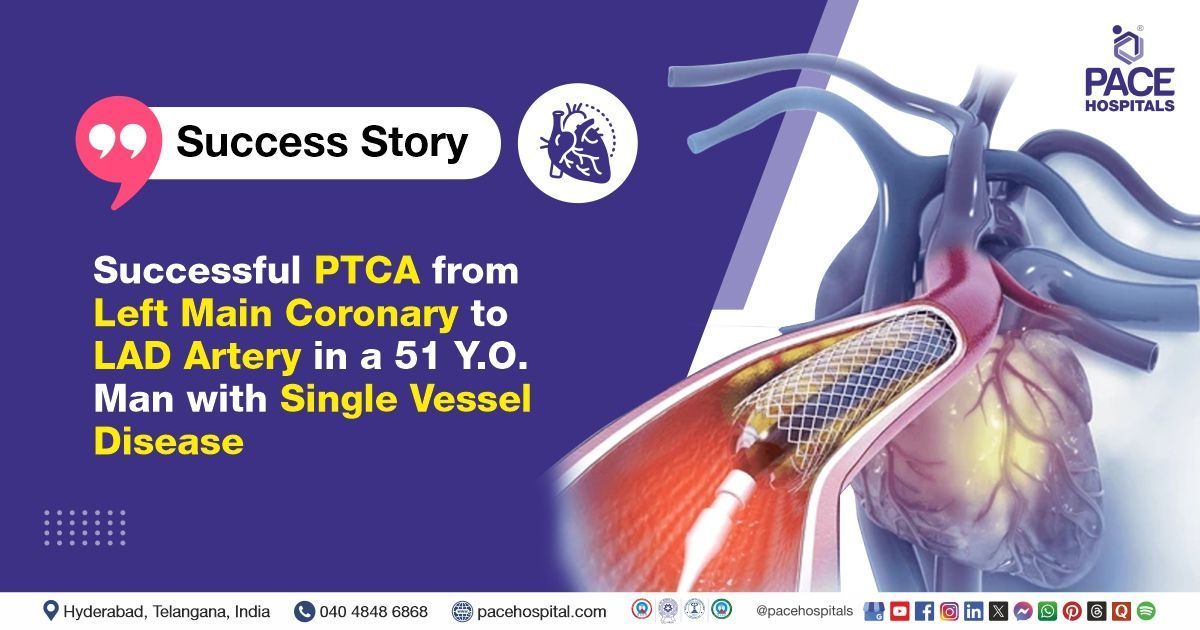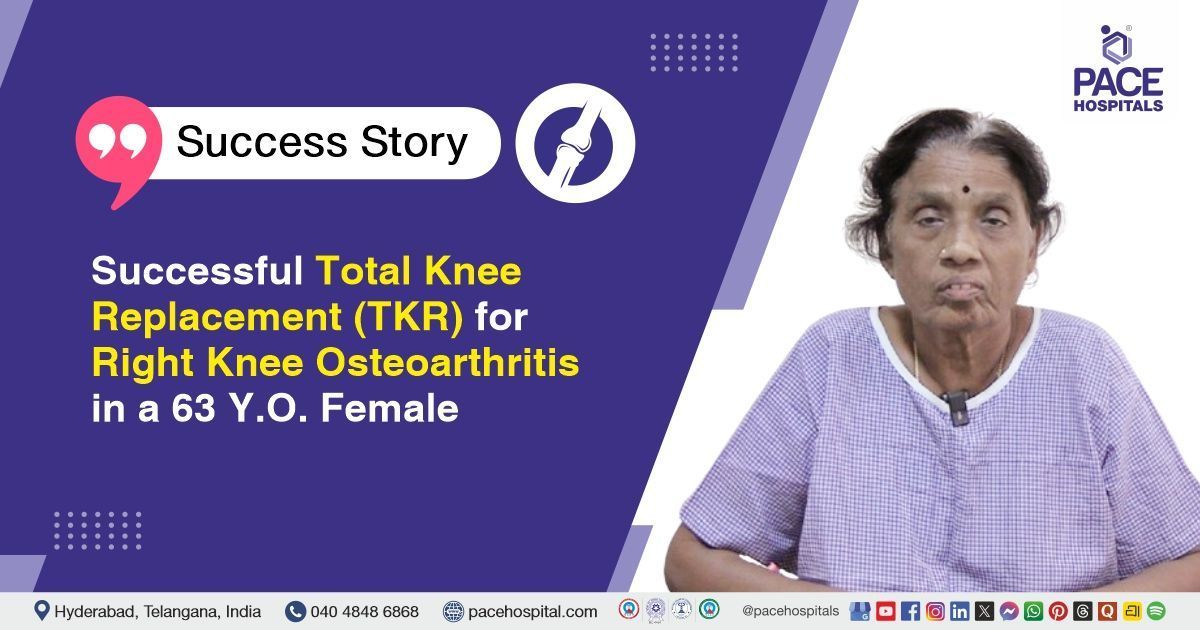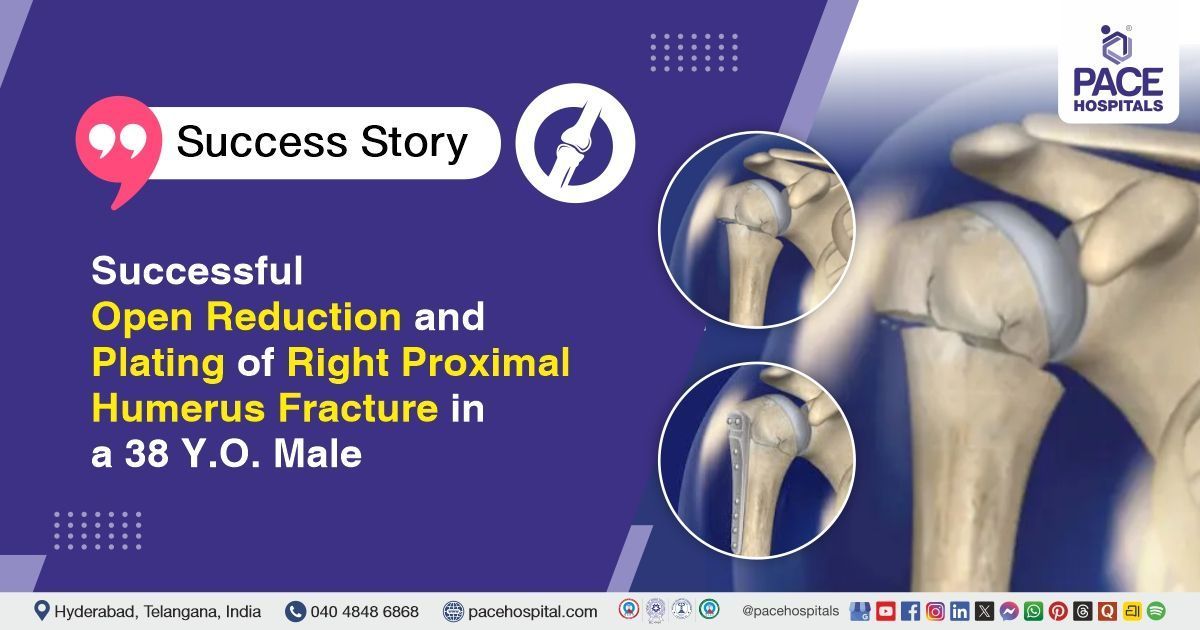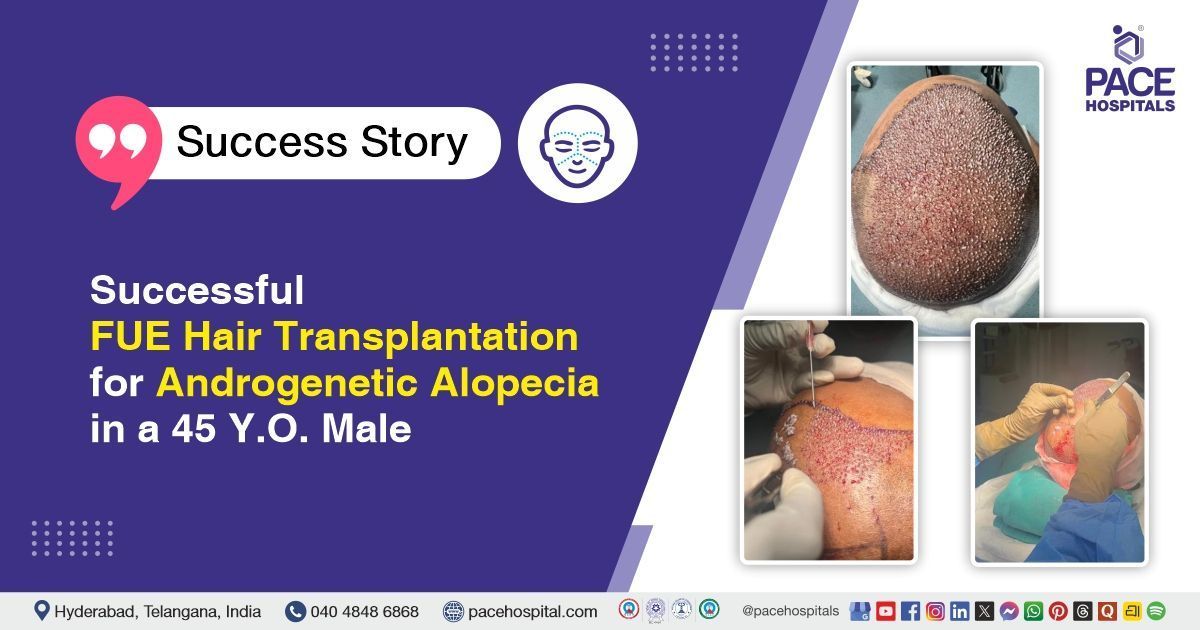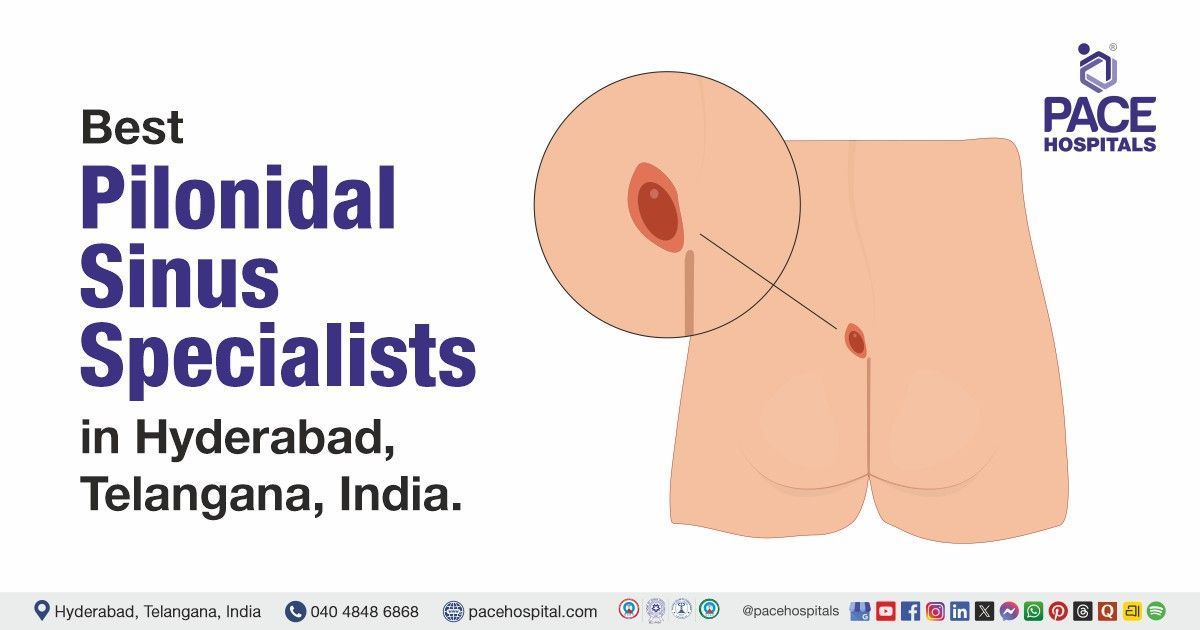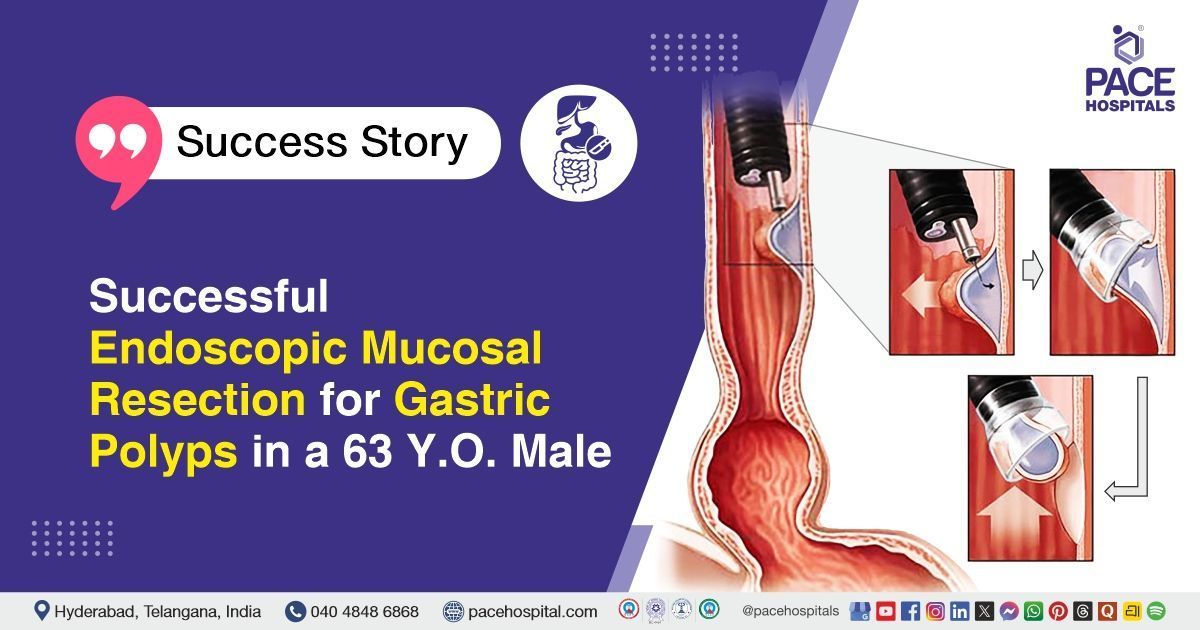Successful PTCA from Left Main Coronary to LAD Artery in a 51-Y.O Man with Single Vessel Disease
PACE Hospitals
PACE Hospitals’ expert cardiology team successfully performed a
Percutaneous Transluminal Coronary Angioplasty (PTCA) with stent placement across the left main coronary artery (LMCA) to the left anterior descending (LAD) artery in a 51-year-old male patient diagnosed with coronary artery disease (CAD). The aim of the procedure was to relieve coronary obstruction and restore adequate blood flow to the myocardium. This was essential to prevent further ischemic damage and improve overall cardiac function.
Chief Complaints
A 51-year-old male patient with a
body mass index (BMI) of 22.2 presented to the Cardiology Department at
PACE Hospitals, Hitech City, Hyderabad, with complaints of chest pain at rest accompanied by sweating, shortness of breath (SOB), and palpitations.
Past Medical History
The patient had no history of hypertension or diabetes. However, he had a significant history of chronic smoking and regular alcohol consumption, both of which are important risk factors for cardiovascular disease.
On Examination
On examination, the patient was conscious, cooperative, and oriented. There was no pallor or pedal edema. Vital signs were stable. Respiratory and cardiovascular examinations were unremarkable, with clear breath sounds and no murmurs. The abdomen was soft and non-tender, and neurological assessment revealed no focal deficits.
Diagnosis
Upon admission to PACE Hospitals, the patient was thoroughly evaluated by the cardiology team, which included a detailed review of his medical history and a comprehensive clinical examination. Given his complaints of chest pain at rest, sweating, shortness of breath, and palpitations, along with ECG findings showing ST-segment elevations in leads V1 to V3, there was a strong clinical suspicion of acute coronary syndrome involving the anterior wall.
The patient underwent a comprehensive diagnostic evaluation to assess cardiac status. Coronary angiography confirmed Single Vessel Disease (SVD) involving the Left Main Coronary Artery (LMCA) extending to the left anterior descending (LAD) artery. Echocardiography demonstrated good left ventricular function.
Based on these confirmed findings, the patient was advised to undergo
Coronary Artery Disease Treatment in Hyderabad, India, under the expert care of the Cardiology Department.
Medical Decision Making
After a thorough consultation with Dr. Seshi Vardhan Janjirala, Consultant Interventional Cardiologist, a comprehensive evaluation was performed to develop an appropriate diagnostic and therapeutic plan tailored to the patient’s coronary artery disease. Considering the patient’s symptoms of chest pain at rest, sweating, shortness of breath, and palpitations, alongside ECG findings of ST elevations in V1-V3 and coronary angiography confirming single vessel disease involving the left main coronary artery (LMCA).
It was determined that percutaneous transluminal coronary angioplasty (PTCA) with stent placement from the left main coronary artery (LMCA) to the left anterior descending (LAD) artery using IVUS guidance was identified as the most effective intervention to restore coronary blood flow and relieve ischemic symptoms.
The patient and his family were informed about his diagnosis, the planned procedures, associated risks, and the expected benefits to preserve heart function and enhance his overall prognosis.
Surgical Procedure
Following the decision, the patient was scheduled to undergo Percutaneous Transluminal Coronary Angioplasty (PTCA) Procedure in Hyderabad at PACE Hospitals, with stent placement from the left main coronary artery (LMCA) to the left anterior descending (LAD) crossover using IVUS guidance.
The procedure involved the following steps:
- Vascular Access and Coronary Angiography: Under aseptic conditions, vascular access was obtained via the femoral or radial artery. A guiding catheter was advanced to the coronary ostium, and coronary angiography was performed to delineate the lesion in the left main coronary artery (LMCA) and left anterior descending artery (LAD).
- Guidewire Advancement and IVUS Assessment: A coronary guidewire was carefully navigated across the LMCA lesion into the LAD. Intravascular ultrasound (IVUS) was used to evaluate vessel size, plaque characteristics, and lesion length, guiding stent sizing and placement strategy.
- Balloon Pre-Dilation: The lesion was pre-dilated with a balloon catheter to prepare the vessel for stent deployment, facilitating optimal stent expansion.
- Stent Deployment: A MEGATRON stent (4.0 mm x 12 mm) was deployed from the LMCA to the LAD in a crossover manner under fluoroscopic and IVUS guidance to ensure proper apposition and full expansion, restoring adequate coronary blood flow.
- Post-Deployment Imaging and Hemostasis: Post-deployment IVUS and angiography confirmed optimal stent placement and vessel patency without complications. Hemostasis was achieved at the access site, and the patient was transferred for monitoring and initiation of appropriate medical therapy.
Postoperative Care
The procedure and post-procedure course were uneventful. During his hospital stay, he received intravenous fluids, dual antiplatelet therapy, and supportive cardiac medications. He remained hemodynamically stable and showed significant improvement in symptoms. Serial ECGs and laboratory tests were within normal limits. The vascular access site was clean without complications. He was subsequently prepared for discharge with comprehensive post-discharge care instructions.
Discharge Medications
Upon discharge, the patient was prescribed medications including antiplatelets to prevent clot formation and heart rate regulators to support cardiac function. A statin was included for lipid management and cardiovascular protection. A gastric acid suppressant and a gastrointestinal protective agents were also prescribed to minimise gastrointestinal side effects.
Emergency Care
The patient and family were informed to contact the emergency ward at PACE Hospitals in case of any emergency or development of symptoms such as chest pain, shortness of breath, abdominal pain, or fever.
Review and Follow-up Notes
The patient was advised to return for a follow-up visit with the Cardiologist in Hyderabad at PACE Hospitals, after 2 weeks, with a prior appointment.
Conclusion
This case highlights the prompt diagnosis and effective management of left main coronary artery disease through PTCA with LMCA to LAD crossover stenting under IVUS guidance. The intervention successfully restored coronary blood flow and relieved symptoms. The patient recovered well postoperatively and was discharged in stable condition.
Integrated Approach to Managing Left Main Coronary Artery Disease with PTCA and IVUS Guidance
Effective management of left main coronary artery disease requires precise imaging techniques like intravascular ultrasound (IVUS) to accurately assess lesion characteristics and guide stent placement. Percutaneous transluminal coronary angioplasty (PTCA) with crossover stenting restores myocardial blood flow, relieving ischemic symptoms and improving cardiac function. Post-procedure dual antiplatelet therapy and supportive cardiac medications are critical to prevent stent thrombosis and promote vessel healing.
The
Cardiologist / Heart specialist plays a vital role in patient education on lifestyle modifications, medication adherence, and symptom monitoring to enhance long-term outcomes. Regular follow-up and imaging assessments ensure sustained vessel patency and cardiac health. A multidisciplinary approach optimizes recovery and reduces the risk of future cardiovascular events.
Share on
Request an appointment
Fill in the appointment form or call us instantly to book a confirmed appointment with our super specialist at 04048486868

